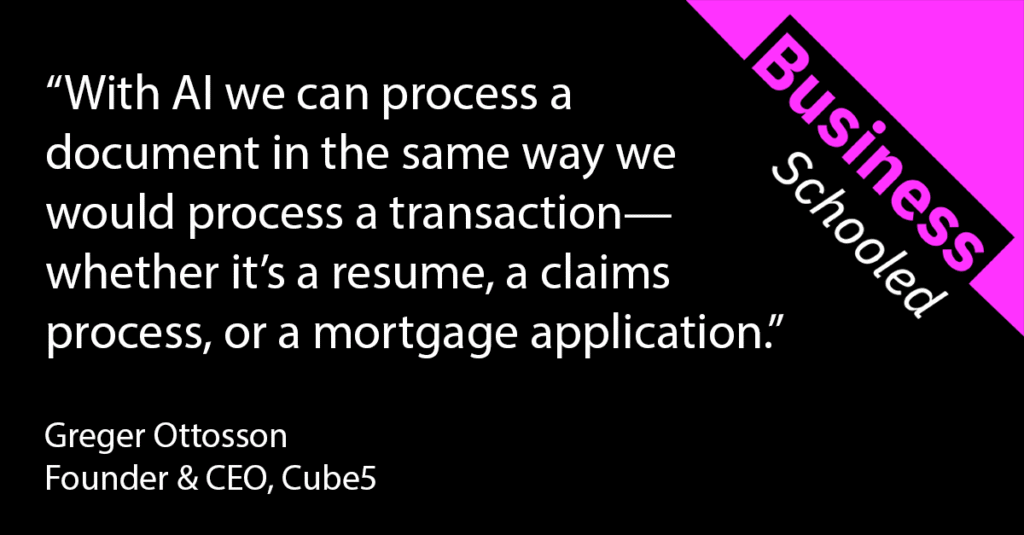Imagine if every clunky web form, multi‑tab spreadsheet, or 20‑field CRM screen simply dissolved into a conversation. That’s the future Cube5 founder Greger Ottosson paints in this podcast episode—and it’s arriving faster than most leaders think thanks to the power of Generative AI.
A New Way to Read the Business
For decades, enterprise systems forced us to squash reality into tidy rows and columns. Claims, mortgages, CVs—everything had to be reduced to whatever a database could digest. Generative AI upends that logic. Large language models can understand the messy PDFs, photos, and chat logs we’ve always shoved to the margins, extracting meaning on demand instead of demanding structure up front.
Where the First Movers Are Aiming
- Frictionless Intake – Snap photos of a dented bumper, upload a résumé, or drag‑and‑drop a supplier contract. AI handles the rest—no more copy‑paste gymnastics or 50‑question wizards.
- Nuanced Decisions – Hiring algorithms can now score the whole candidate, not just GPA and job title. Underwriting engines can weigh real driving behavior instead of blunt age brackets.
- From Docs to Responses – When you need to wade through heavy documentation to answer a query, such as riffling through product documentation to submit an RFP to a client, AI can analyze the source content and generate a formatted response.
Two Waves of Transformation
Ottosson frames today’s landscape in two phases:
- Wave 1 – Surface Enhancements: Chatbots and copilots layer on top of legacy stacks, smoothing UI friction.
- Wave 2 – Process Re‑Design: Teams re‑engineer workflows around “unlimited interns”—fleets of AI agents that read, reason, and route work at scale. Creativity, not capacity, becomes the gating factor.
What Leaders Should Do Next
- Run a Bootcamp to level‑set teams on Gen AI capabilities and risks.
- Prioritize High‑Document, High‑Decision Loops (claims, onboarding, RFPs) for pilot projects.
- Measure Nuance, Not Just Speed: Track improvements in decision quality—better matches, fewer exceptions—alongside raw efficiency.
Generative AI already feels like cloud computing on fast‑forward; the organizations that rethink why a process exists—not just how it runs—will set the pace. As Ottosson notes, the real disruption begins when companies stop treating AI as another bolt‑on tool and start letting it redraw the map.
For more details, check out this post that lists three ways business documentation is being transformed.

